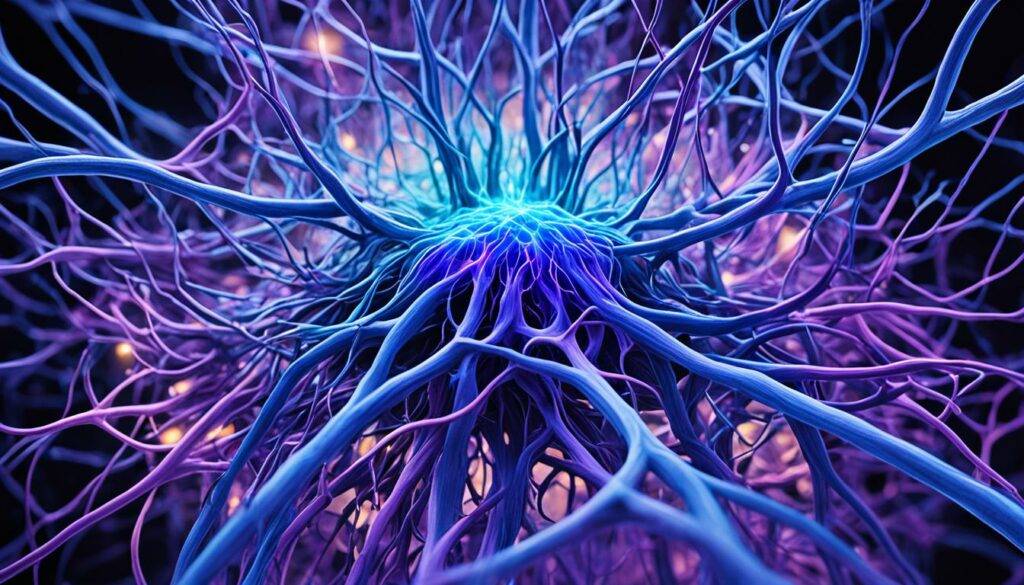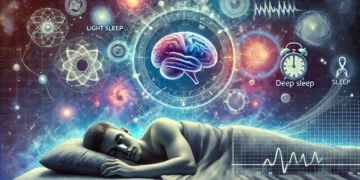“I am not what I think I am, and I am not what you think I am. I am what I think you think I am.” – Charles Horton Cooley
Have you ever wondered how your sense of self is shaped? How do we form our identities, and what role does social interaction play in this process?
These questions lie at the heart of Social Mirror Theory, a psychological concept that explores the intricate relationship between self-perception, conformity, and social behavior.
According to sociologist Charles Horton Cooley, our concept of self is not only influenced by internal factors but also by how we believe others perceive us.
Cooley coined this concept as the “looking-glass self,” suggesting that we build our sense of self within social settings and through the judgments and feedback received from others.
Imagine a mirror that reflects not just your physical appearance but also your thoughts, emotions, and beliefs. Social Mirror Theory posits that our self-concept is like this mirror, constantly shaped and reshaped by the perceptions and evaluations of those around us.
We engage in a process of imagining how we appear to others, anticipating their judgment of us, and then developing feelings and responding accordingly. This complex interplay between self-perception and social feedback forms the foundation of the looking-glass self.
The advent of social media has added new layers of complexity to the social mirror theory. In the digital age, our identities extend beyond the physical realm into the virtual world.
We now have the “cyber” self, an online identity that can be meticulously curated and presented to others. With multiple platforms and the ability to create different versions of ourselves online, we are faced with questions about the authenticity and development of our identities in this new context.
Key Takeaways:
- Social Mirror Theory, coined by Charles Horton Cooley, suggests that our self-concept is influenced by how we believe others perceive us.
- The looking-glass self involves imagining how we appear to others, anticipating their judgment, and responding to their perceived evaluations.
- Social media introduces the concept of the “cyber” self, where individuals can present different versions of themselves online.
- Understanding the complexities of Social Mirror Theory can help us gain greater self-awareness and promote personal growth.
- Social Mirror Theory raises questions about the development of online identities and the potential consequences of excessive focus on the cyber self.
The Role of Social Media in the Looking-Glass Self
The rise of social media platforms like Facebook and Twitter has revolutionized the way we perceive ourselves and interact with others.
In the context of the looking-glass self, social media introduces a new dimension known as the “cyber” self, which plays a significant role in shaping our online identity and self-perception.
On social media platforms, individuals have the freedom to present different versions of themselves to the world. They can carefully curate their profiles, selecting the highlights of their lives and projecting an idealized image.
The cyber self interacts with others, receiving social feedback and validation in the form of likes, comments, and shares. This feedback contributes to our self-perception and can either boost our confidence or spark self-doubt.
Unlike the actual self, which is rooted in our physical existence, the cyber self is highly malleable and can be shaped, updated, and perfected. It allows us to selectively showcase certain aspects of our lives while keeping others hidden.
This ability to present an edited version of ourselves creates an intriguing dynamic between authenticity and self-presentation.
While social media offers numerous opportunities for personal growth, creativity, and altruism, there are also potential negative consequences.
The constant focus on online identities can sometimes lead individuals to prioritize their cyber selves over their real-world selves. This overemphasis on the virtual realm may result in difficulties forming genuine connections and fostering meaningful relationships offline.
Additionally, the influence of social media on self-perception can be particularly detrimental for young users. Adolescents are still in the process of developing their sense of self and are highly susceptible to social comparisons.
The pressure to conform to unrealistic standards portrayed online can contribute to feelings of inadequacy and low self-esteem. Furthermore, excessive time spent on social media may hinder the development of essential life skills and interpersonal connections.
The impact of social media on self-perception also raises concerns about the potential splintering of identity. With the ability to present different versions of ourselves on different platforms, there is a risk of losing a cohesive sense of identity.
This fragmentation may lead to a lack of authenticity and a diminished understanding of who we truly are.
In summary, social media plays a significant role in the looking-glass self, introducing the concept of the cyber self and shaping our online identity and self-perception.
While it offers opportunities for positive outcomes, it is necessary to approach social media with caution and balance it with real-world interactions. Striving for authenticity, focusing on meaningful connections, and nurturing our offline selves are crucial for maintaining a healthy relationship with social media and preserving our sense of self.

The Biological Basis of Social Mirroring: Mirror Neurons
Mirror neurons, a key component of neurobiology, play a vital role in our ability to empathize and imitate others. These specialized neurons in the brain are activated both when we observe someone else performing an action and when we perform the same action ourselves.
This remarkable mirror neuron system forms the foundation of social mirroring, enabling us to unconsciously mimic the actions of others and develop emotional connections.
Research has shown that mirror neurons are present in various regions of the brain, including the primary somatosensory cortex and premotor cortex.
These regions are responsible for sensory integration and motor actions, indicating their significance in the process of imitation and empathy.
The activation of mirror neurons during observation and execution of actions helps us understand and resonate with the experiences of others, fostering a sense of shared understanding and connection.
Furthermore, mirror neurons are believed to be involved in hebbian learning, a process where neurons wire together based on their simultaneous activation.
This learning mechanism is particularly important in childhood development, as children learn to speak by imitating the facial movements and sounds of others.
Through this process, audiovisual mirror neurons are established, allowing individuals to understand and replicate complex auditory and visual information.
Role of Mirror Neurons in Empathy
Mirror neurons play a central role in the development of empathy, allowing us to put ourselves in others’ shoes and understand their emotions and intentions.
Through the activation of mirror neurons, we are able to emotionally resonate with the experiences of others, leading to increased empathy and compassion.
This empathetic response promotes prosocial behavior and strengthens social bonds, facilitating cooperation and collective well-being.
“Mirror neurons allow our brains to bridge the gap between our own experiences and the experiences of others, fostering a deep sense of empathy and connection.”

Implications of Mirror Neurons in Imitation
The role of mirror neurons in imitation is crucial for learning and social integration. By observing and imitating the actions of others, we acquire new skills and cultural norms.
Mirror neurons provide a platform for social learning, allowing us to learn from others’ experiences and accelerate our own development. They also facilitate the transmission of knowledge and behaviors within communities, contributing to the growth and evolution of societies as a whole.
| Mirror Neurons | Key Functions |
|---|---|
| Activation during observation and execution of actions | Fostering empathy and emotional connection |
| Presence in the somatosensory cortex and premotor cortex | Facilitating sensory integration and motor actions |
| Involvement in hebbian learning | Supporting imitation and audiovisual learning |
Theatrical Nature of Social Mirroring
Social mirroring plays a central role in our everyday interactions, and it is deeply intertwined with the theatrical nature of human behavior. From early childhood, we are naturally drawn to role-play and make-believe, which are fundamental for fostering cooperation, nurturing culture, and developing reflective consciousness.
Imagine the mind as a grand theater, where thoughts and scenarios take center stage. In this theater of the mind, individuals effortlessly immerse themselves in various roles, acting as both performers and spectators.
This capacity to model other minds within our own minds, known as role-play, is a unique consequence of our evolution as Machiavellian beings with a remarkable penchant for drama.
“All the world’s a stage, and all the men and women merely players.”
– William Shakespeare
Theatrical elements are not confined to the realm of imagination; they are ingrained in our everyday lives. We constantly engage in social role-play, navigating the intricacies of social situations and building and repairing social relations.
Just like actors, we adapt our behaviors and performances to suit the specific context, audience, and goals at hand.
This theatrical nature of social mirroring is not limited to individual interactions. It extends to collective experiences, such as cultural rituals, performances, and even online communities.
These shared experiences allow us to collectively suspend disbelief, transcending the boundaries of reality and immersing ourselves in the power of make-believe.
Theatricality in social mirroring is a driving force behind our capacity for empathy. By assuming the roles of others, we gain insight into their perspectives, emotions, and experiences.
This empathetic engagement enhances our understanding of others and lays the foundation for deep connections and meaningful relationships.
The theatrical nature of social mirroring also provides a platform for personal growth and self-expression. Through role-play, we can experiment with different identities, aspirations, and narratives, fostering creativity and expanding our sense of self.
This process allows for introspection, self-discovery, and the exploration of new possibilities.
As the curtains rise on the grand stage of social mirroring, we embrace the transformative power of role-play, navigating the complex dance of social interaction, and unleashing the true potential of our theater of mind.
The Relationship Between Mirror Neurons and Language
The intricate connection between mirror neurons and language has been a subject of great interest in the field of neurobiology. While language is a fundamental mode of human communication, it does not fully encompass the complexity of human interaction and expression.
Instead, language relies on hebbian learning, a process where constant interaction between neurons strengthens communication and facilitates the integration of auditory, visual, and motor information.
In this context, mirror neurons play a vital role, as they enable individuals to imitate facial movements, sounds, and gestures, thereby contributing to language development.
Research has shown that the ability to mirror and imitate others’ actions, facilitated by mirror neurons, is crucial for language acquisition in children.
Through social mirroring, children mimic the facial expressions, vocalizations, and gestures of their caregivers, gradually building their language skills.
This process of imitation and mirroring allows children to make sense of the sounds and movements associated with language, ultimately enabling them to develop their own linguistic abilities.
Notably, the process of language acquisition extends beyond mere imitation. It is through the integration of auditory, visual, and motor information facilitated by mirror neurons that individuals are able to grasp the complexities of language.
By observing and mimicking the sounds and movements of others, individuals establish the neural connections necessary for language comprehension and production. This integration of sensory and motor processes supports the development of both spoken and written language skills.
Furthermore, the ability to make imagination public through theatre and role-play is a foundational aspect of human communication and understanding.
By engaging in make-believe scenarios and interactive play, individuals strengthen their language skills by experimenting with different linguistic expressions, tones, and perspectives.
This imaginative and performative aspect of human communication further underscores the role of mirror neurons in language development and communication.
Overall, mirror neurons provide a neurobiological basis for the crucial role they play in language acquisition, comprehension, and expression. By facilitating mirroring and imitation, mirror neurons enable individuals to learn language through social interaction and hebbian learning.
Moreover, the integration of auditory, visual, and motor processes supported by mirror neurons lays the foundation for robust language skills.
Through the interactive and theatrical nature of human communication, mirror neurons contribute to the rich tapestry of language and foster effective communication and understanding.
Conclusion
Social Mirror Theory offers invaluable insights into the process of self-discovery and personal growth. By understanding how our interactions with others shape our self-perception, we can cultivate greater self-awareness and make positive changes in our behavior and beliefs.
Through the looking-glass of social mirroring, we can unlock the potential to become the best version of ourselves.
However, the advent of social media and the digital age adds complexity to the social mirror theory. It raises questions about the development of online identities and the potential consequences of an excessive focus on the cyber self.
While social media allows us to present different versions of ourselves, it is important to strike a balance and not lose sight of our authentic selves.
Nevertheless, the power of mirror neurons and the theatrical nature of social mirroring provide opportunities for empathy, meaningful communication, and emotional connection.
By embracing the notion that our minds are like theaters, where we can rehearse and explore different scenarios, we can enhance our understanding of others and nurture stronger relationships.
Exploring the depths and nuances of social mirror theory can empower individuals to navigate the complexities of social behavior and foster personal growth.
By being conscious of how our self-perception is influenced by external judgments, we can proactively shape our sense of self and embark on a journey of self-realization and positive change.
FAQ
What is social mirror theory?
Social mirror theory suggests that individuals develop their self-concept by observing how they are perceived by others. It describes how people base their sense of self on how they believe others view them.
How does social media affect the looking-glass self?
Social media introduces the concept of the “cyber” self, where individuals can present different versions of themselves on different platforms. It raises questions about online identity and self-perception in the digital age.
What are mirror neurons and how do they relate to social mirroring?
Mirror neurons are specialized neurons in the brain that are activated when we observe someone else perform an action and when we perform the same action ourselves. They play a role in social mirroring and empathy, allowing us to unconsciously imitate others and develop emotional connections.
What is the theatrical nature of social mirroring?
Social mirroring is closely connected to role-play and the theatrical nature of human interaction. It involves individuals taking on different roles, both in their minds and in everyday life, to navigate social situations and build relationships.
How does mirror neurons relate to language?
Language development is closely linked to social mirroring, as children learn to speak through the imitation of facial movements and sounds. The constant interaction between neurons strengthens communication and allows for the integration of auditory, visual, and motor information.
What can social mirror theory teach us about self-discovery and personal growth?
Understanding how social interaction and mirroring shape our self-perception can lead to greater self-awareness and positive changes in behavior and beliefs. Exploring social mirror theory can help individuals navigate social behavior and foster personal growth.
































































